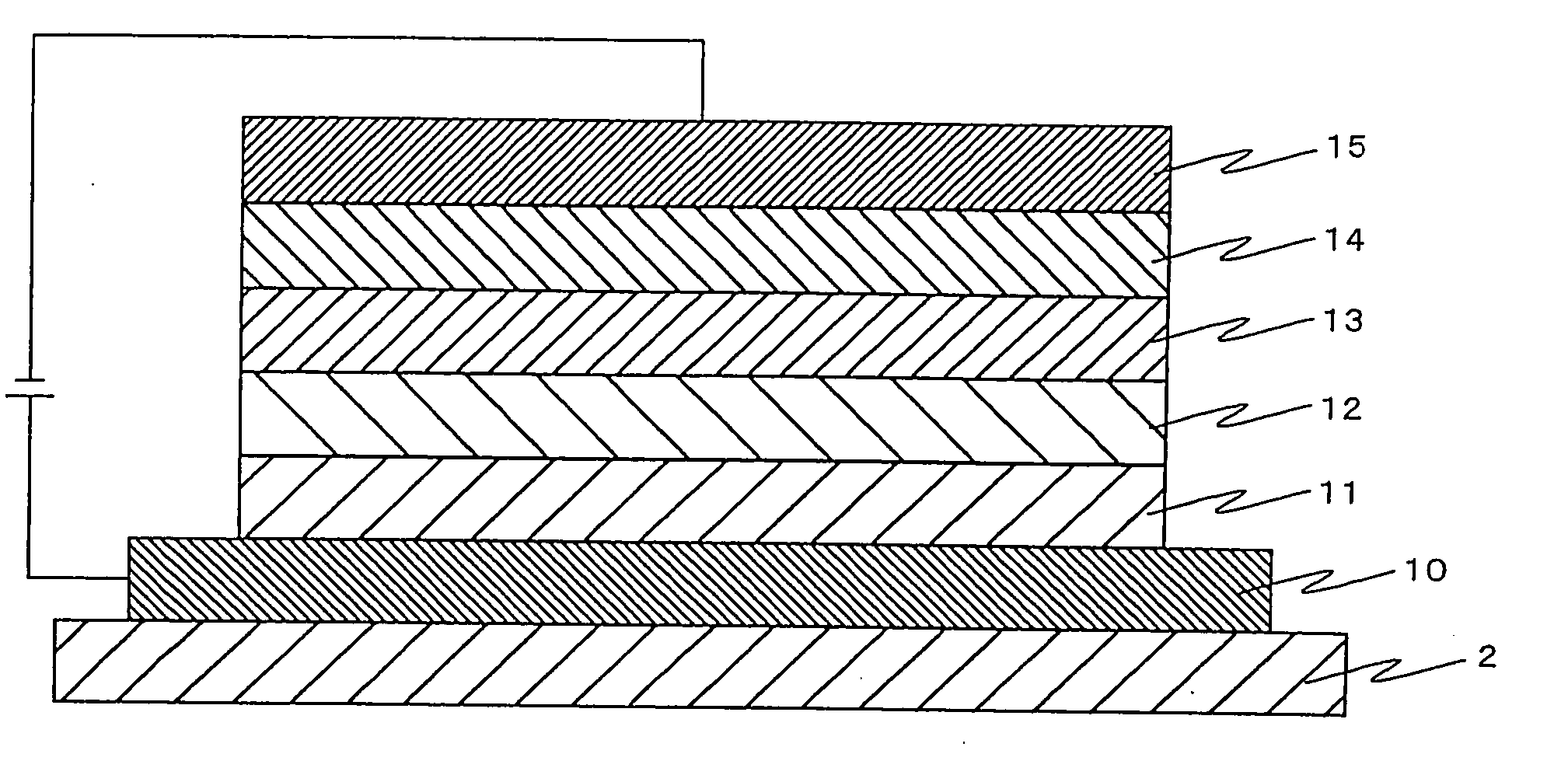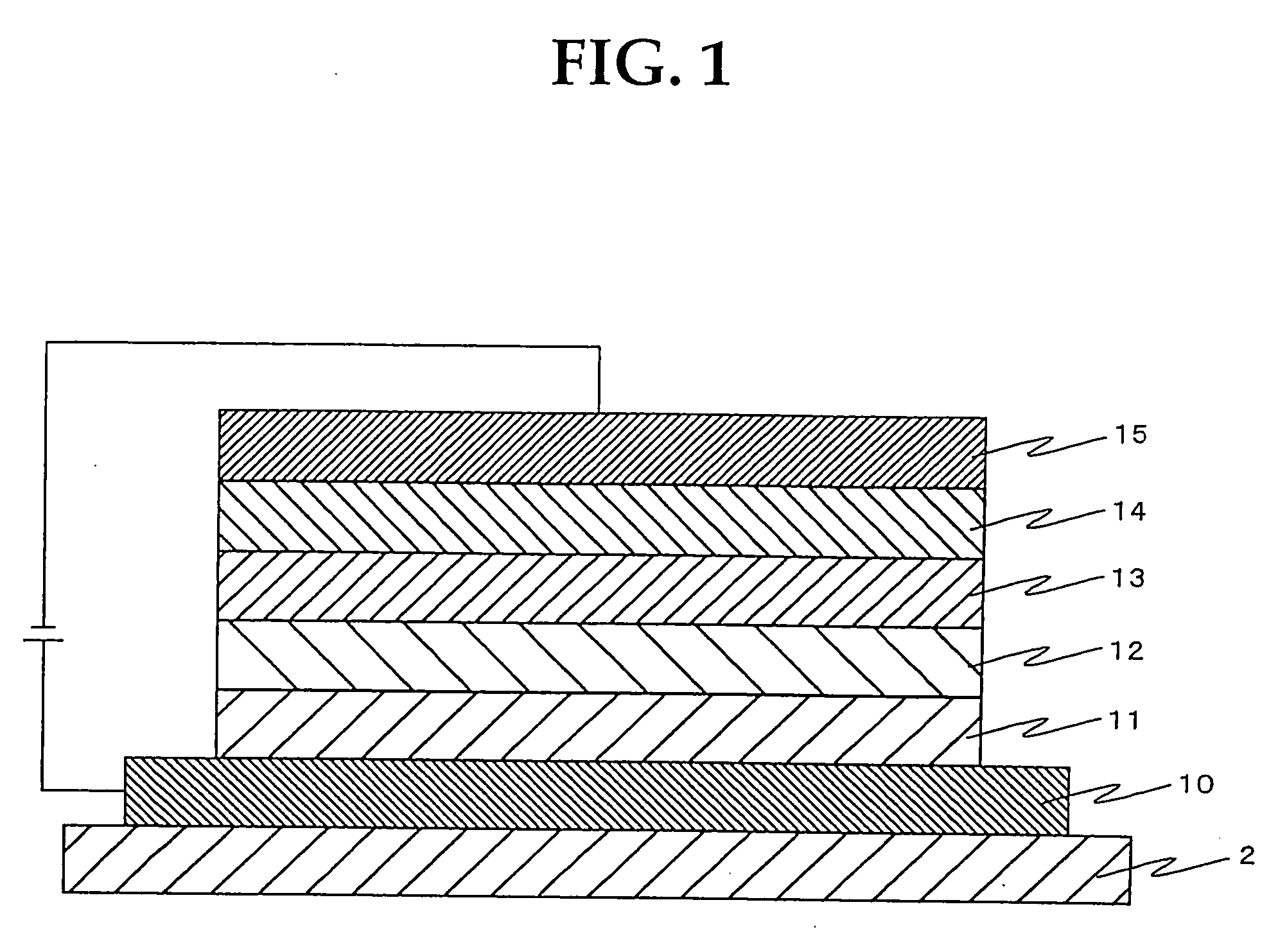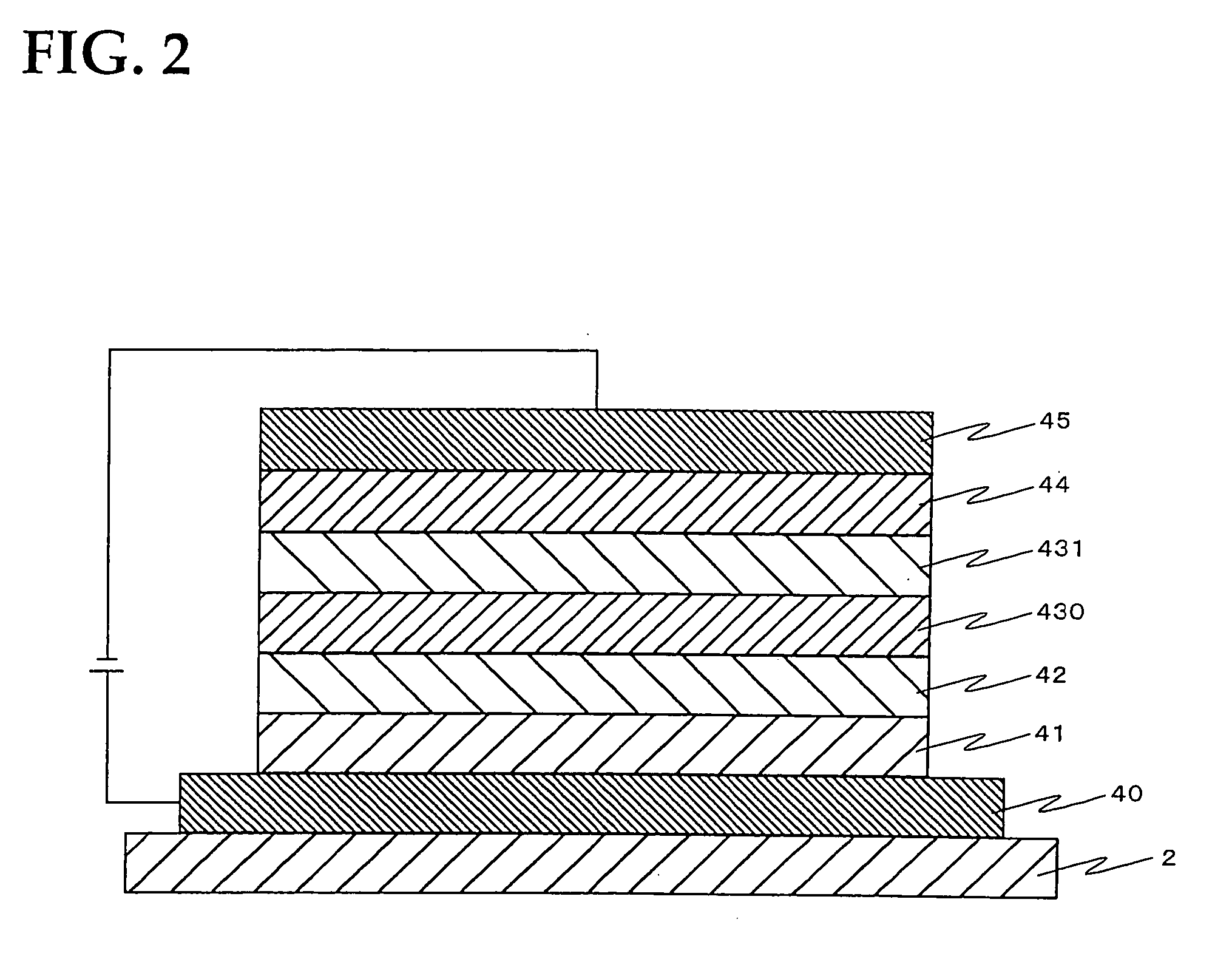Organic electroluminescent device
a technology of electroluminescent devices and organic el, which is applied in the direction of discharge tubes/lamp details, discharge tubes luminescnet screens, electric discharge lamps, etc., can solve the problems of difficult to obtain a sufficient lifetime in practice, poor whiteness of conventional organic el devices emitting white lights, and inability to emit white lights. , to achieve the effect of improving light-emitting efficiency, improving whiteness and life of organic el devices
- Summary
- Abstract
- Description
- Claims
- Application Information
AI Technical Summary
Benefits of technology
Problems solved by technology
Method used
Image
Examples
first embodiment
The First Embodiment
[0057]>
[0058] The present organic EL devices according to the first embodiment have constructions where at least a light-emitting layer, a non-light-emitting layer, an electron-injecting-transporting layer, and then a cathode in this order are formed on an anode. The present organic EL devices according to the first embodiment are characterized in that the non-light-emitting layer of the present invention is laminated between the light-emitting layer and the electron-injecting-transporting layer.
[0059] In the followings, the present organic EL device illustrated in FIG. 1, where anode (10) is formed on substrate (2) and where on anode (10) thus formed, hole-injecting-transporting layer (11), light-emitting layer (12), non-light-emitting layer (13), electron-injecting-transporting layer (14), and then cathode (15) in this order are formed, will mainly be set forth, but naturally, other layer constructions can also be used.
[0060] For example, the light-emitting l...
second embodiment
The Second Embodiment
[0297]>
[0298] In the present organic EL devices according to the second embodiment, at least a red light-emitting layer, a blue light-emitting layer, and then a cathode in this order are formed on an anode, said red light-emitting layer containing a green light-emitting dopant.
[0299]FIG. 5 illustrates the present organic EL device wherein anode (10), hole-injecting layer (31), hole-transporting layer (51), red light-emitting layer (321), blue light-emitting layer (320), electron-transporting layer (54), electron-injecting layer (34), and then cathode (15) in this order are formed on substrate (2). The present organic EL devices according to the second embodiment will now be set forth in more detail with reference to FIG. 5.
[0300]2)>>
[0301] Substrate (2) is usually in a plate form to support the present organic EL devices. In general, organic EL devices consist of very thin layers and thus are prepared on the support of such a substrate.
[0302] Since the presen...
example 1
[0403] Transparent glass substrate (1), on one of whose surfaces anode (10) made of an ITO layer of 250 nm thickness had been formed, was washed with an alkali and then with a pure water, dried, and then cleaned with UV-ozone.
[0404] On anode (2) thus washed and cleaned, using a vacuum vapor deposition apparatus (a carbon crucible, at a vapor deposition speed of 0.1 nm / s, under a vacuum around 5.0×10−5 Pa), an layer of 50 nm thickness of N,N′-bis(4′-diphenylamino-4-biphenylyl)-N,N′-diphenylbenzidine of the following formula (1) was prepared to be hole-injecting-transporting layer (11).
[0405] On hole-injecting-transporting layer (11), using a vacuum vapor deposition apparatus (a carbon crucible, at a vapor deposition speed of 0.1 nm / s, in vacuo around 5.0×10−5 Pa), a co-deposited layer of 30 nm thickness of 93.0 weight % of 4,4′-bis(2,2′-diphenylvinyl)biphenyl of the following formula (2) and 7.0 weight % of 4,4′-[bis(9-ethyl-3-carbazovinylene)-1,1′-biphenyl of the following formul...
PUM
 Login to View More
Login to View More Abstract
Description
Claims
Application Information
 Login to View More
Login to View More - R&D
- Intellectual Property
- Life Sciences
- Materials
- Tech Scout
- Unparalleled Data Quality
- Higher Quality Content
- 60% Fewer Hallucinations
Browse by: Latest US Patents, China's latest patents, Technical Efficacy Thesaurus, Application Domain, Technology Topic, Popular Technical Reports.
© 2025 PatSnap. All rights reserved.Legal|Privacy policy|Modern Slavery Act Transparency Statement|Sitemap|About US| Contact US: help@patsnap.com



